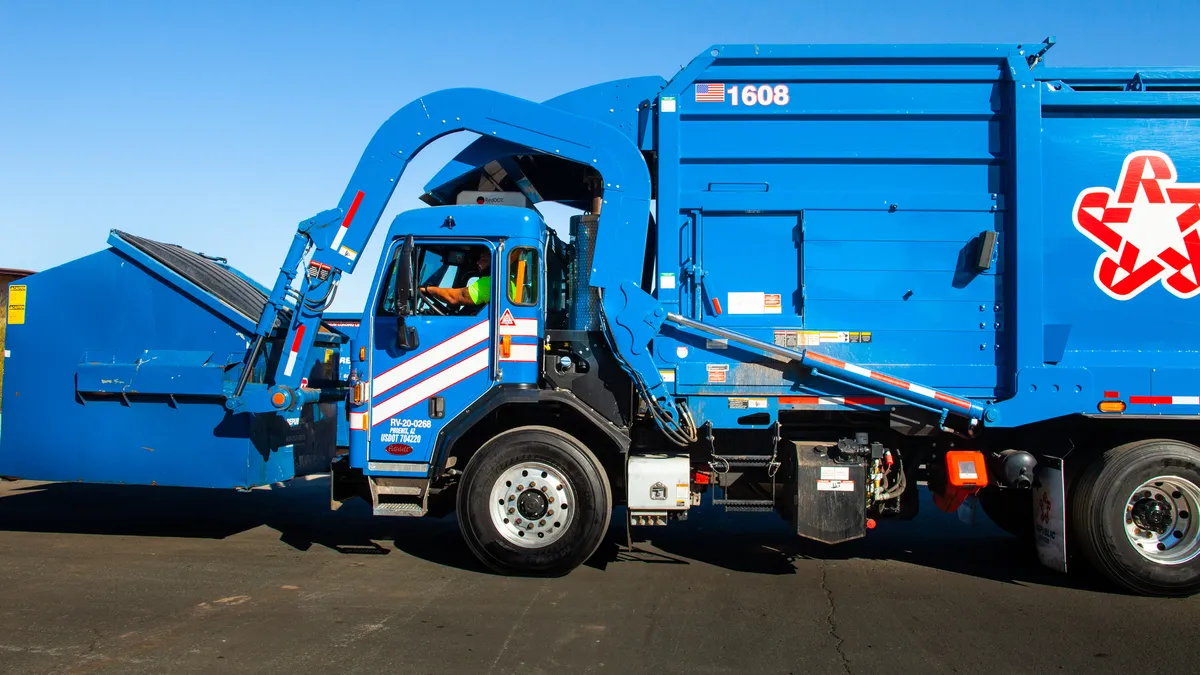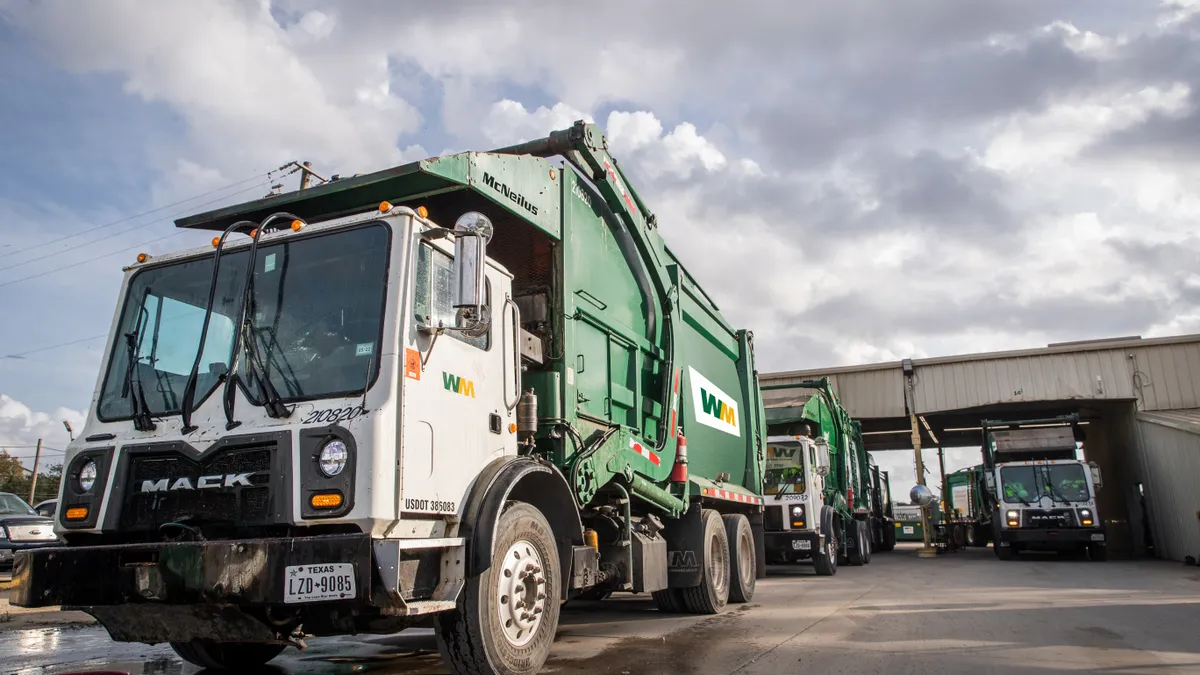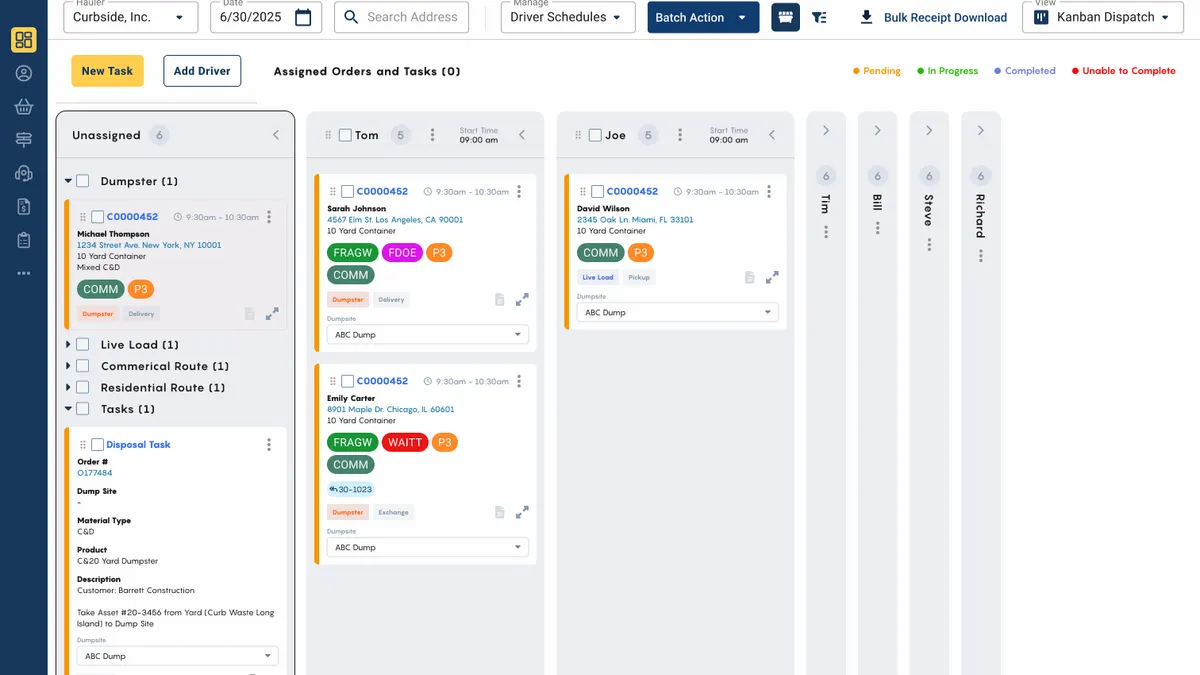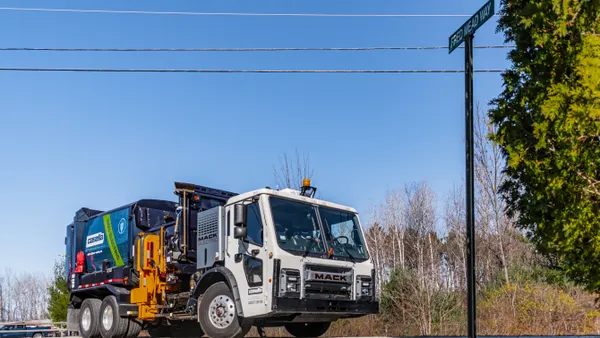Although the waste industry has worked to make jobs safer in recent years, especially during the COVID-19 pandemic, vehicle-related deaths remain a top issue, according to speakers at the Solid Waste Association of North America’s Safety Summit on Thursday.
Presenters also discussed in-cab camera and artificial intelligence technology meant to reduce vehicle accidents and deaths, along with training techniques meant to create safer workplaces and drive down injury and fatality rates. It's been a long-term goal for a sector that often sees collection workers among the top five or six most fatal occupations in the United States. Professionals also offered an overview of lessons they learned on how to keep their employees safe during the ongoing pandemic.
“We want to get every one of the more than 400,000 people who work in this great industry home to their families at the end of their workday safely,” SWANA Executive Director David Biderman said.
Here are a few of the takeaways from the event.
Vehicle-related accidents remain a major cause of death in the industry
SWANA presented its 2020 fatality statistics during the event, which showed that accidents involving a single waste vehicle and those involving being struck by the victim’s own waste vehicle were the most frequent cause of death. In both 2019 and 2020, about 40% of worker fatalities were the result of one of these two causes, according to data tracked by the organization. SWANA's fatality data comprises workers in North America with the majority in the U.S.
Last year, 12 workers died in single-vehicle accidents, often in situations where the driver lost control, said Jesse Maxwell, advocacy and safety senior manager at SWANA. “The underlying cause varies, and it isn't always clear in these cases, but it seems reasonable to assume that speeding and distractions are likely,” he said.
Nine others were killed when struck by their own waste vehicle. In some cases, helpers were struck and killed by a reversing collection vehicle after they stepped off the back. In other cases, drivers were killed by their truck as they got out of the cab. Another six people were killed when struck by a non-waste vehicle, he said, which could include instances where workers were hit by vehicles when collecting trash on their route.
There were 52 total waste worker deaths in 2020, down from 53 in 2019 and 59 in 2018. The 2020 numbers do not include COVID-19-related deaths, and SWANA may update the fatality numbers to reflect those deaths, said Maxwell.
SWANA also tracks members of the public who were killed in waste industry-related incidents. In 2020, 76 members of the public were killed in such accidents, and 47 of those deaths were considered driver/passenger-related accidents while 13 were pedestrians. Third-party deaths went down 5% overall in 2020, but the pedestrian-related deaths increased by 1%.
Though vehicle-related deaths are a major reason for fatalities, Maxwell said workers were also killed in accidents involving heavy machinery, mechanical accidents or other causes. The data is just one snapshot of the hazards the industry faces, Maxwell said, but he urged waste management companies to reflect on these trends when deciding what safety topics to discuss with staff in the coming year.
Fleet technology can play a role as a vehicle safety tool
In an effort to reduce incidents involving collection vehicles, several presenters said they've installed technology such as cameras or artificial intelligence-driven programs in their fleets. This technology can help companies gain insight into driver behaviors, alert drivers when there are hazards, and help collect data that can be used to update or improve training programs.
“There's really been a push in technology to create a safer environment for our folks that are operating those big vehicles,” said Shawn Mandel, vice president of safety at Waste Connections.
Waste Connections has installed machine vision and AI technology in the cabs of most of its trucks, which are able to notice and log driver-specific behaviors. The technologies work together to recognize objects such as other vehicles and humans, as well as specific distracted driver habits such as smoking, eating or texting. The in-cab technology sounds alerts when drivers are driving too closely, rolling through stops, or drifting out of their lane.
Leck Waste Services in Pennsylvania began using camera technology from fleet management company 3rd Eye on its collection vehicles in 2019, and accident claims have since gone down “significantly” in that time, said Safety Compliance Director John Andel.
“We’re able to identify bad habits the drivers may have and turn them around,” he said. For every 300 unsafe behaviors, said Andel, there are about 29 minor incidents that can lead to a major one.
Andel and Mandel stressed the technology only works if fleet operators are willing to use it as a coaching tool, not as a surveillance method meant to shame or scare drivers into following rules. Companies should be clear with their drivers about what types of information the technology is meant to gather, and make space for honest conversations about how to improve, they said.
Mandel called the technology “game changing," but said “if your company or organization is not prepared to invest the time, effort, energy and resources into coaching, this technology is not for you. It just creates liability for you.”
Waste Connections’ coaching model involves managers and drivers reviewing any incidents recorded in-cab and mutually discussing ideas for changing risky or dangerous behavior if the driver appears to be at fault. Leck has a similar approach, where managers and drivers are urged to be transparent with each other when the camera picks up a notable incident.
“The drivers are a bit apprehensive at first by having cameras in there, but their goal is to do the right thing,” Andel said. If a driver has an unsafe encounter on the road, “usually they will tell me about it long before I even see the video."
Technology is no substitute for good training
Others, including Republic Services, are considering purchasing in-cab technology like the kind used at Waste Connections. Jim Olson, Republic’s vice president of safety, said the company is also investing in a safety program meant to reduce collection point accidents, particularly backing accidents, “probably one of the most frequent types of crashes that we have at the point of collection,” he said.
The program tackles specific bad habits that lead to backing injuries, such as allowing helpers to stay on the step when backing, backing faster than idle speed, or not checking mirrors or backup cameras before moving. The training aims to break these habits, but also integrates the company’s larger safety message that every employee, regardless of their position or title, is responsible for calling out unsafe behavior.
Olson, along with Jerry Peters, OSHA compliance manager for Ohio-based Rumpke Waste & Recycling, said companies should also consider retraining employees on how to safely exit or dismount from collection vehicles, as many injuries come from stepping off and getting caught under a wheel, slipping and falling, or forgetting to look for oncoming traffic.
Companies can also draw up a job safety analysis to find areas where the company can improve or clarify training to make sure workers have explicit, clear guidance.
Panelists said their companies have been able to whittle down incident rates with a combination of technology, safety initiatives and a company culture that makes it clear that safety is everyone’s responsibility. This point was also emphasized in recent corporate earnings reports.
Waste Connections highlighted how safety-related incident rates decreased 12% in 2020, and about 60% of its operating locations reported either zero safety-related incidents or year-over-year improvements. Republic also highlighted a record 21% reduction in incidents over 2019, cutting risk management costs by 14%.
Lessons learned from COVID-19
On top of existing hazards, service providers have also had to keep employees safe from coronavirus risks. As the pandemic continues, one element is fighting the burnout that comes from COVID-19 fatigue.
Jeff Martin, vice president of safety for Waste Management, said the industry was already “built around strong fundamentals” where workers follow personal protective equipment standards and handwashing rules. His company enacted a daily health screening system and made other adjustments. Whatever COVID improvements companies make, he said, they must keep people in the loop and provide consistent messaging to motivate employees to stay safe at work – especially those who might be tired of wearing masks or social distancing.
The pandemic still hit some service providers particularly hard, including the city of El Paso, Texas, according to Ellen Smyth, director of environmental services for the city. Her department had almost 60 of its 225 waste collection employees out due to COVID-19 at one point last year, forcing them to suspend recycling pickup in November. “We’re still trying to adjust,” she said.
Waste haulers in most states are also still waiting to be eligible for the COVID-19 vaccine, which Biderman said could happen in late spring to early summer. He urged industry leadership to model good behavior such as social distancing, wearing masks and using hand sanitizer.
“Now’s not the time to stop, even though we are seeing the light at the end of the tunnel."





















